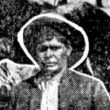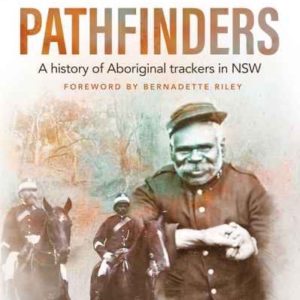Loading map...

Trackers were employed at Parkes from as early as 1875 when two were sent to a nearby property to search for a lost boy. They returned five days later without success [ref]Sydney Mail and New South Wales Advertiser 2 October 1875: 425.[/ref]. The names of the trackers who worked from 1883 to 1886 are known. Alfred was the tracker in 1883 and 1884, Jack in 1885 and Robert in 1886 [ref]Police Salary Registery 1883-1886, SRNSW 11/16335, Reel 1970.[/ref]. Nothing further about their identities has come to light.
An old tracker passed away at Parkes in 1926. James Howe, who was born at Narrandera in about 1849, was best remembered for tracking another Aboriginal man wanted for killing a settler at Mickey’s Plains, near Forbes. Howe followed the tracks to a crossing on the Bogan River where the wanted man was captured. He also worked as a station labourer, drover and miner [ref]Albury Banner and Wodonga Express 1 October 1926: 7; NSW Death Certificate of James Howe 1926/012925.[/ref].
Another tracker who worked near Parkes in the 20th century was Roy Governor, brother of outlaws Jimmy and Joe Governor who murdered five members of the Mawbey family at Breelong (near Gilgandra) in July 1900. Roy was only about five years old when the murders took place, but he had his own run-in with the police at Mendooran in 1923 when he shot a Sargeant who was attempting to arrest him on larceny charges [ref]Dubbo Liberal and Macquarie Advocate 19 October 1923: 2.[/ref]. Tracker Alexander Riley played a part in his capture. After serving a sentence of 12 years, Roy was at Condobolin in the early months of 1944 when the police asked him to assist with the tracking of a stolen horse. Sitting on the sideboard of a police car, Roy “directed the police across paddocks and along stock routes.” He soon determined that the thief was accompanied by a woman and the horse was being ridden bare-back. The tracks led to Derriwong Rail Station where it was apparent that the suspects had boarded a train. The police rang ahead to Parkes and the suspects were arrested after the train arrived. They were returned to Condobolin for trial [ref]Wellington Times 2 March 1944: 11.[/ref].

 This website explores the history of Aboriginal trackers in NSW from 1862 when the current NSW Police Force was established through to 1973 when the last tracker, Norman Walford, retired. You can read about the lives of individual trackers and some of the incredible tracking feats they...
This website explores the history of Aboriginal trackers in NSW from 1862 when the current NSW Police Force was established through to 1973 when the last tracker, Norman Walford, retired. You can read about the lives of individual trackers and some of the incredible tracking feats they...

There were over 200 NSW police stations that employed Aboriginal trackers between 1862 and 1973. Many were concentrated in the central-west and north-west of the state, the agricultural and pastoral heartland of NSW. This is because one of the main jobs of trackers was to pursue sheep, cattle and horse thieves. Trackers sometimes lived in small huts out the back...
Learn More ►
Pathfinders book Pathfinders, A history of Aboriginal trackers in NSW, written by Dr Michael Bennett and published by NewSouth, is now available from all good bookstores. Click on the link below to order your copy. https://www.abbeys.com.au/book/pathfinders-a-history-of-aboriginal-trackers-in-nsw.do Early History Since the beginning of the colony, government agencies, explorers, surveyors and members of the general public called upon the tracking...
Learn More ►